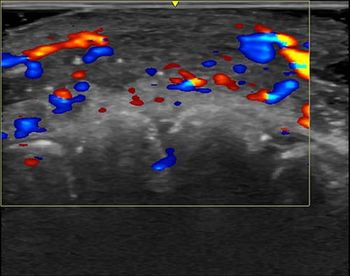
Clinical Case From Taiwan
A 52-year-old man suffered from chest tightness and dyspnea on exertion for two years. Because progressive symptoms failed to respond to medical treatment, the patient was admitted for heart transplantation evaluation. The donor heart had to be resuscitated, and its viability as an orthotopic transplant was unclear.
CLINICAL HISTORY
A 52-year-old man suffered from chest tightness and dyspnea on exertion for two years. Because progressive symptoms failed to respond to medical treatment, the patient was admitted for heart transplantation evaluation. The donor heart had to be resuscitated, and its viability as an orthotopic transplant was unclear.
OUTCOME
Heterotopic heart transplant with arrhythmic heart rates.
HISTORY
In April 2001, a 48-year-old head injury donor with good cardiac function passed the brain-death examination. During transport of the donor to the Far Eastern Memorial Hospital, cardiac arrest occurred.
Cardiopulmonary resuscitation was performed immediately in the ambulance. When the donor arrived at the hospital, his blood pressure was 60/30 mm Hg, and his heart rate was 36 bpm. An immediate sternotomy revealed that the heart was already arrested, distended, and cyanotic. The donor was soon put on cardiopulmonary bypass. After that, the heart started to beat again and could maintain a stable hemodynamic status even when weaned off CPB. Since the suitability of the resuscitated heart as an orthotopic heart transplant was unclear, the hospital decided to do a heterotopic heart transplantation. Five years after successful surgery, the recipient is in good condition.
DISCUSSION
The left anterior descending coronary artery of the transplanted heart was successfully reconnected to the aorta. A 6-mm-diameter Gore-Tex graft was inserted between the aorta and the LAD. Both hearts are functional but show different heart rates and rhythms.
IMAGES
A. Maximum intensity projection image shows coronary arteries of native heart (arrow heads) and right coronary artery of transplanted heart (arrow).
B. Volume-rendered image shows heterotopic transplanted heart on patient's right side and native heart on left.
REFERENCES
- Chiu KM, Lin TY, Chu SH. Successful heterotopic heart transplantation after cardiopulmonary bypass rescue of arrested donor heart. Transplant Proc 2006;38(5):1514-1515.
- Chiu KM, Lin TY, Li SJ, et al. Hybrid pulmonary artery conduit angioplasty for heterotopic heart transplantation. Transplant Proc 2006;38(5):1538-1540.
Case provided by Dr. Shu-Hsun Chu, Cardiovascular Center, Far Eastern Memorial Hospital, Taipei, Taiwan via Siemens AG.
Newsletter
Stay at the forefront of radiology with the Diagnostic Imaging newsletter, delivering the latest news, clinical insights, and imaging advancements for today’s radiologists.




























